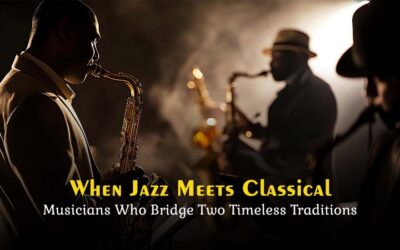As a symbol of African-American freedom, jazz has evolved into a genre now considered American classical music since its humble roots in the late 19th and early 20th centuries. According to popular belief, jazz combines West African and European music. Jazz enthusiasts continue to enjoy this soothing genre. It’s always possible to learn about jazz. Below is a brief introduction to jazz music.
The Origins of Jazz
It is essential to understand jazz’s origins to understand what it is. In the 1920s, African Americans were only allowed to own drums in New Orleans, the birthplace of jazz. It was a port city that was a hub of social activity. Through the years, jazz has evolved into various types as musicians from national, regional, and local cultures contributed to this genre. The 1940s were the era of Bebop, while the 1960s and 1970s saw jazz-rock fusions become increasingly popular.
Characteristics of Jazz
The characteristics of jazz depend on its type, including distinctive rhythm, harmonic sophistication, and improvisation.
Distinctive rhythms: In traditional jazz rhythms, the first note in an eighth note pair is given extra emphasis, while the second note is lighter as it “swings” toward the following note.
Harmonic sophistication: In jazz music, three-note triads are rare, and most jazz chords feature the seventh chord tone.
Improvisation: The spirit of improvisation unites nearly all forms of jazz music. Every jazz band member can improvise over a jazz composition, from lead instruments to rhythm sections to vocalists.
Elements of Jazz Music
It is best to explain the eight essential elements of jazz music for beginners to help them understand this unique music genre. A jazz ensemble may use any of these elements depending on the type of jazz they perform.
Drums: The drums are the heart of jazz. Some essential jazz drums are the kick drum, the hi-hat, the snare drum, the low and high toms, and the crash.
Piano: Throughout jazz’s history, the piano has played an essential role in enhancing harmony and improvisation.
Guitar: Unlike what many people think, almost every jazz band likes to use the guitar.
Trumpet: A trumpet has a vibrating mouthpiece made of brass. Louis Armstrong made the trumpet the mainstay of jazz.
Bass: An upright jazz bass creates a unique, pulsating sound by plucking the strings instead of using a bow.
Saxophone: The saxophone is the only instrument that allows jazz players to express their musical notes quickly.
Trombone: This brass instrument has been used in jazz music since the genre’s earliest days.
Vocals: The vocal jazz style derived from the blues and emerged in the early twentieth century.
The Greatest Jazz Artists of All Time
Jazz music history should mention some iconic jazz singers. All of these artists have influenced different styles of jazz music, making it more popular today than ever. Here are a few artists’ names:
Louis Armstrong: As one of the most influential jazz artists and a brilliant trumpeter, he was probably the first well-known jazz star. His harmonic music was precise and melodic.
Davis: As a legendary trumpeter, he played in most classic jazz bands of the 1950s and 1960s. Throughout his career, he developed a distinctive jazz style.
Billie Holiday: A fabulous jazz vocalist with a soulful voice who had a social and functional impact for a long time.
Ella Fitzgerald: the most iconic jazz singer. She was blessed with impeccably clear vocals, making her a unique singer.
Sylvia Brooks: she is a fast-rising Jazz vocalist. She brings her audiences a mesmerizing combination of smooth, articulate vocals backed by organic and soulful instrumentation.
Conclusion
Jazz is music that can shape qualities by giving courage and preparing artists to improvise and innovate. Jazz education is essential for young and old minds alike. Jazz music songs are the most stimulating genre of music. For those who are beginning to explore jazz music, this short guide will help them to start.




